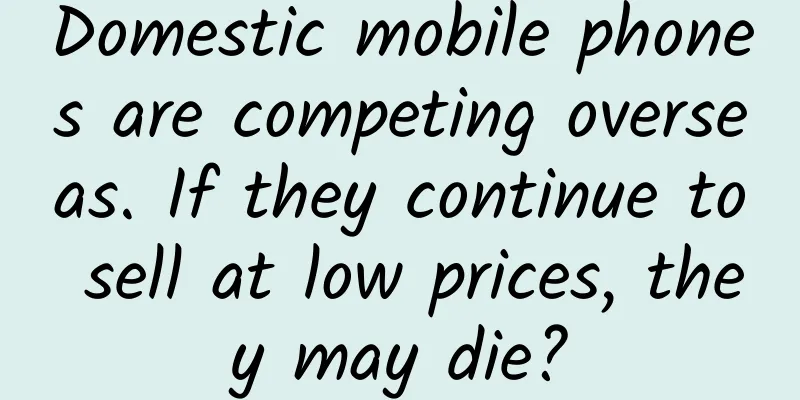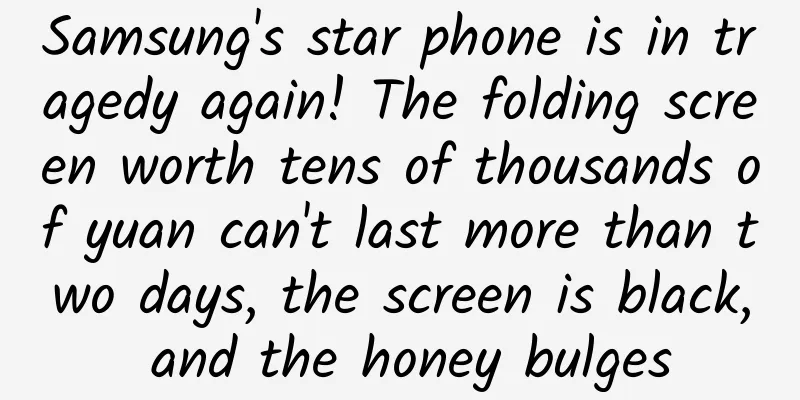Domestic mobile phones are competing overseas. If they continue to sell at low prices, they may die?

|
On April 6, Canalys Market Research and Sina Weibo jointly released the "Smartphone Micro Report" for the second half of 2015. The data showed that the four major domestic mobile phone brands, ZTE, Huawei, Coolpad and Lenovo, which were previously called "China Cool Alliance" by Chinese netizens, have been officially replaced by the "New Four" consisting of Huawei, Xiaomi, OPPO and Vivo. In addition to the changes in the first-tier brand landscape, in 2015 domestic mobile phones began to bid farewell to the smartphone dividend brought by the huge population. The hottest Internet model in the past few years seems to have encountered a bottleneck, and news of the death of suppliers and mobile phone brands has been circulating in the market. The worse news is that the changes in 2015 are probably just the beginning, not the end. IDC, a third-party research organization, said that China has basically become a market dominated by replacement. TrendForce predicts that global smartphone shipments will increase by 10.3% year-on-year in 2015, and will drop to 8.1% in 2016. However, a report by Strategy Analytics shows that China's year-on-year shipment growth in 2015 has dropped to 3%. Regarding 2016, when decline and death are only a thin line apart and it is also a year of opportunity to break through the high-end market, domestic mobile phone brands such as Lenovo, Huawei, OPPO, Gionee, Coolpad, Meizu and LeTV have different views and positions. Regarding the main battlefield of competition, some believe that domestic competition has ended and Coolpad will move to overseas markets, while others believe that the domestic market is still changing rapidly. Regarding the life and death of mobile phone brands, Huawei believes that only three brands can survive, while Gionee believes that five to six brands can survive, and Coolpad believes that all current first-tier brands can survive. Huawei, OPPO and Gionee share the view that low prices and low profits are unsustainable, while Lenovo believes that brands without overseas markets will be eliminated first. Whoever seizes overseas will seize the world? In 2015, the domestic smartphone market was almost completely developed. The reason why it still had a 3% year-on-year growth was largely due to the small replacement wave brought about by the promotion of 4G. However, this new bonus growth point was almost exhausted in 2016. Competition in the stock market means more intense competition. The growth of one brand will inevitably lead to the decline of another brand. Under this situation, domestic mobile phone brands have split views on the domestic and international markets. Fang Yuan, general manager of Coolpad's Internet business, said that the entire Chinese market for mobile phones has reached a state of saturation. A typical feature of this year's competitive situation is that the competition will be overseas, and the overseas market will determine the ultimate survival of this company. "The domestic competition situation is already quite obvious, and the corresponding market shares have been almost competed out. It is very difficult to take away anyone's market share. China's price war has already been very fierce. Continuing to compete will only make us suffer more and more. Now many domestic manufacturers do not have much money to make, and there is not much point in fighting further." Fang Yuan is a faction that is more critical to the overseas market. Lenovo Chairman Yang Yuanqing is also an overseas-oriented person. He once analyzed the importance of overseas markets with Sina Technology from a historical perspective. "Mobile phone manufacturers that only focus on the Chinese market will have great problems surviving in the future. The PC market has already set an example. Computer manufacturers that did not go global at the time have now almost disappeared." Huawei, which is also a member of the "China Cool Alliance" and has become the leader of the "New Four", also placed overseas markets at a higher position in 2016. Richard Yu, president of Huawei's consumer business, said in his New Year's speech that after achieving the goal of survival, 2016 is a turning point for changing the industrial structure and global rise strategic opportunities, and to achieve new goals, whether the overseas markets in various countries can be rapidly expanded is the first priority. Xu Li, vice president of Gionee, disagrees with the view that overseas markets will be the new main battlefield for domestic mobile phones in 2016. He believes that the current domestic mobile phone market structure in China is not fixed and may change at any time. No company can stabilize in the current structure, and domestic competition is still very fierce. It is too early to say that the main battlefield will shift. But both he and Xiaomi Chairman Lei Jun believe that for companies that have gained a competitive advantage in China, their first overseas competitive market will be India. The reason for choosing India is that it is a market similar to China, and also because patents in the first-tier market are a huge barrier. Yang Yuanqing once calculated that the cost difference between having patents and not having patents is about 20%. If there is no patent, it is basically a fight without any resistance. In addition, Chinese companies also face other additional risks in first-tier markets. For example, Huawei and ZTE have both encountered sanctions in the United States. Even so, Fang Yuan is still very optimistic. He believes that the third world and emerging countries' markets will soon be occupied by the Chinese mobile phone market. Huawei has already occupied a considerable share in the overseas first-tier markets and developed countries in Europe and the United States. Although market expansion will be more difficult under the protection of the patent system and intellectual property rights, it is only a matter of time before Chinese mobile phone manufacturers occupy the global mobile phone market. Low prices will inevitably lead to death? High prices may lead to survival In March, the demise of the internet mobile phone brand Dakele sparked a wave of discussion in the industry about the death wave. Before Dakele, there was an incomplete statistics by the media that 13 upstream first-tier mobile phone suppliers in Shenzhen went bankrupt in 2015. With the Nokia case in the past, it can be said that all mobile phone brands may be only one step away from death. In 2016, almost all domestic mobile phone manufacturers predicted their demise, with the only difference being the number of companies that survived. Gionee's answer was 5-6, Coolpad's answer was 8-9, and Huawei once thought it would be no more than 4, but the latest updated number is 2-3. Xu Li said that mobile phone sales in China are expected to remain flat this year, market concentration will intensify and continue to concentrate on a few large brands. Many small brands will disappear, and their total volume is already declining. Richard Yu also expressed a similar view at this year's CES, "In the next three to five years, most Chinese mobile phone manufacturers will disappear. Many companies have already disappeared or retreated to niche markets. The mobile phone market is no longer a market suitable for entrepreneurs. Most Chinese Internet brand mobile phone manufacturers will eventually die." As for which mobile phone manufacturers may encounter the crisis first, the answers given by Huawei, OPPO and Gionee are all the brand risks of low-profit and low-price models. "Corporate innovation requires large amounts of continuous investment. Reasonable profits are the soil for corporate innovation. It is difficult to achieve healthy and long-term innovation under a low-profit model," said Wu Qiang, vice president of OPPO. OPPO and Gionee are the only remaining domestic mobile phone brands that have survived from the feature phone era to the smartphone era. Gionee Chairman Liu Lirong and his old partners agree that "from feature phones to smartphones, after going through so many eras of change, Gionee's important experience is that brands that sell expensive products may not still exist, but those that sell cheap products are gone." "A 15% market share determines whether this brand can continue to make a living in the mobile phone market. When the market share is lower than 10%, it is difficult for the company to survive. If it is lower than 15%, it cannot make a profit. Profits will affect R&D investment. Without R&D, the company will disappear from the market faster," said Yu Chengdong. In addition, the competition between online and offline mobile phone channels will probably continue into 2016. Before 2015, most people were praising the online model and criticizing the offline model. However, in 2015, with the slowdown of Xiaomi's mobile phone growth, the setback of Internet mobile phones such as Dakele, and the strong rise of mobile phone brands mainly based on offline channels such as OPPO and VIVO, the situation reversed. Even Xiaomi, the originator of Internet mobile phones, began to expand offline channels. "Three years ago, 90% of people believed that the Internet accounted for 70% to 80% of the entire market, but this was far from what was expected, and even the opposite was true. Now offline mobile phone sales account for 70% to 80% of the market share." Xu Li said that the new wave of upgrading mobile phones may be an opportunity for offline channels. "Now smartphone users have reached the stage of pursuing better, from completely pursuing cost-effectiveness to paying more attention to brand and high-end personalized image. Consumers need more experience when they want to change to a better mobile phone, and offline channels can provide users with the services they need." It is foreseeable that, although the opinions of major domestic manufacturers are not consistent, with the rise of offline channels in 2016, it is inevitable that the competition for terminal resources will become fierce in the short term. The overseas market and the mid-to-high-end market of 3,000 to 4,000 yuan and above will probably be the boundary between life and death. As a winner of Toutiao's Qingyun Plan and Baijiahao's Bai+ Plan, the 2019 Baidu Digital Author of the Year, the Baijiahao's Most Popular Author in the Technology Field, the 2019 Sogou Technology and Culture Author, and the 2021 Baijiahao Quarterly Influential Creator, he has won many awards, including the 2013 Sohu Best Industry Media Person, the 2015 China New Media Entrepreneurship Competition Beijing Third Place, the 2015 Guangmang Experience Award, the 2015 China New Media Entrepreneurship Competition Finals Third Place, and the 2018 Baidu Dynamic Annual Powerful Celebrity. |
<<: VR Internet is a good idea, but it may not become a reality
Recommend
What is the “raw coconut” in raw coconut latte? Why is it so popular?
Unexpectedly, one year later, the concept of “raw...
Self-driving cars need to go through 15 challenges before they can “help everyone”
What does the future of driverless cars have to d...
Source code shows Google ruthlessly cuts off Android fingerprint recognition function
Before the launch of Google's new flagship Ne...
How to promote Xiaohongshu
With the continuous development of the Internet, ...
Shark: I have walked sideways in the sea for tens of millions of years
Thanks to Spielberg's masterpiece "Jaws&...
What is the minimum monthly consumption for 400 calls?
According to the data collected by customer servi...
The old king of the empire passed away, and the crown prince Lee Jae-yong ascended the throne. His first priority will be to prevent Samsung from being split up.
Samsung Chairman Lee Kun-hee died in his own hosp...
Spending thousands of yuan to test your child's talent genes? It's definitely a waste of money and a rip-off for your child!
1. The application value of genetic testing in me...
Leapmotor Financial Report: In 2024, Leapmotor will deliver 144,155 vehicles in the whole year, an increase of nearly 30% year-on-year
Leapmotor released its "2023 Annual Financia...
Doctors can also make mistakes?! Do you really understand "evidence-based medicine"?
"Evidence-based medicine" has become a ...
How did humanity win the 3,000-year history of fighting smallpox?
Infectious diseases are the endless enemy of huma...
Are you afraid of "anesthesia"? Will general anesthesia make people stupid?
Hello everyone, many people don’t know much about...
Apple's legendary design team disbanded, but Jobs is not
This article is reprinted with permission from AI...
Is it true that setting off fireworks can disinfect? Experts: The cost outweighs the gain
As the Spring Festival approaches, the discussion...









